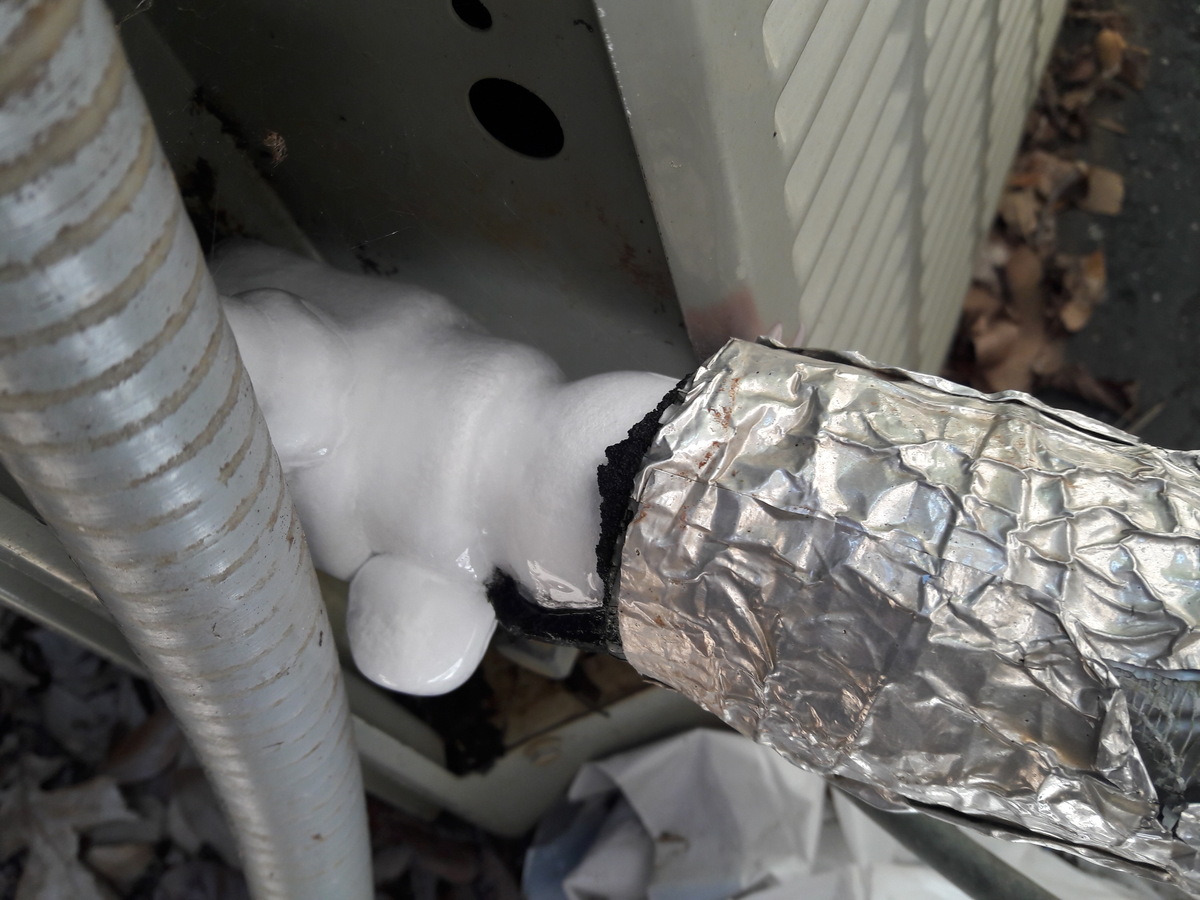Icy Air Conditioner Pipe - Recognizing and Fixing the Issue Promptly
Icy Air Conditioner Pipe - Recognizing and Fixing the Issue Promptly
Blog Article
What're your opinions on Why Is Ice On My Outside Air Conditione?

Introduction
Uncovering that your AC pipeline is iced up can be worrying, specifically throughout warm summer season when you rely on your ac system the most. Comprehending what to do in such a circumstance is vital to stop more damage to your air conditioning system and guarantee your convenience inside your home.
Understanding the Causes
A number of variables can contribute to the cold of an a/c pipeline. Comprehending these causes can help you deal with the concern efficiently.
Lack of Airflow
One typical cause of a frozen air conditioning pipe is inadequate air flow. When the air movement over the evaporator coil is restricted, it can create the coil to go down below freezing temperature level, leading to ice formation on the pipeline.
Low Refrigerant Levels
Insufficient refrigerant levels in your a/c system can likewise result in a frozen pipe. Low cooling agent degrees can trigger the pressure in the system to drop, resulting in the freezing of dampness on the evaporator coil.
Winter Conditions
In colder environments, freezing temperatures outside can contribute to the cold of a/c pipelines. If your air conditioner system is not properly protected or if there are leaks in the ductwork, cold air can penetrate the system, creating the pipeline to ice up.
Dirty Air Filters
Unclean or clogged air filters can limit air flow in your a/c system, causing various issues, consisting of a frozen pipe. It's important to change or clean your air filterings system regularly to guarantee appropriate airflow and prevent ice buildup.
Indications of a Frozen Air Conditioning Pipe
Recognizing the indicators of a frozen AC pipeline is important for timely action.
Reduced Airflow
If you see a substantial decrease in airflow from your vents, it could indicate an icy pipe.
Ice Buildup on the Pipe
Visible ice accumulation on the refrigerant line or the evaporator coil is a clear indication of a frozen AC pipeline.
Odd Sounds from the Unit
Unusual audios, such as hissing or gurgling, coming from your AC device can signify that there's ice existing on the pipe.
Immediate Actions to Take
When faced with an icy AC pipe, it's vital to act quickly to avoid more damages to your cooling system.
Turning off the air conditioning
The primary step is to switch off your air conditioning system to stop the system from running and exacerbating the issue.
Checking for Blockages
Inspect the area around the interior device for any kind of blockages that might be blocking airflow, such as furniture or curtains.
Defrosting the Pipe
You can utilize gentle methods like placing towels taken in cozy water around the frozen pipeline to aid thaw it gradually.
Preventive Measures
Taking preventive measures can aid prevent future occurrences of an icy a/c pipe.
When DIY Methods Fail
If your efforts to thaw the pipe or address various other problems are unsuccessful, it's time to call in an expert.
Significance of Hiring a Professional HVAC Technician
A qualified HVAC specialist has the competence and tools needed to detect and repair problems with your air conditioner system safely and efficiently.
Normal Maintenance Checks
Set up routine maintenance consult an expert HVAC service technician to guarantee that your air conditioning system is running successfully.
Altering Air Filters
Routinely change or cleanse your air filters to avoid airflow constraints and maintain optimal performance.
Shielding Exposed Pipes
If your air conditioning pipelines are revealed to cold temperatures, think about shielding them to avoid freezing during winter months.
Looking For Professional Help
If DIY approaches stop working to fix the issue or if you're unsure concerning exactly how to proceed, it's ideal to seek assistance from a certified HVAC specialist.
Conclusion
Taking care of a frozen air conditioner pipe can be a frustrating experience, yet knowing just how to respond can assist minimize damages and restore comfort to your home. By recognizing the causes, acknowledging the signs, and taking timely activity, you can effectively deal with the concern and prevent future incidents.
Frozen AC Line: Why It Happens & What To Do About It
A frozen AC line can be a rather peculiar sight in a place like Phoenix, Arizona where nothing ever freezes. In this post, we’ll discuss what makes an air conditioner line frozen – and what you can do about it.
Dirty Air Filters
Did you know that you should be cleaning or replacing your air filters on a monthly basis? Failing to do this can result in airflow issues that, in turn, cause your evaporator coils and lines to freeze over. You’ll notice a buildup of ice on both components, although the buildup on your pipes will, of course, be more evident unless you open your air condition up to reveal the coils.
What To Do About It
Give your air filter a good cleaning if it’s reusable. If not, replace the filter outright. Next, switch your air conditioner’s fan setting on and leave it there for 2-3 hours. This will draw warm air in, helping to thaw your evaporator coil. You can also check out this article for some tips on cleaning the coils themselves if you’d like to speed the process up. Before you switch the unit back to its normal state, make sure the supply vents are completely unobstructed and free of dust or other debris.
If you keep having this issue even after replacing your filters regularly, contact a local HVAC repair company and have them inspect your evaporator coil, ductwork, and any other components that may be at fault. If you live in the Phoenix, Arizona area, give American Home Water and Air a call.
Low Refrigerant Levels/Leakage
What To Do About It
Contrary to what air conditioner “recharge” companies often tell their clients about refrigerant, it should never need to be simply refilled. You see, refrigerant runs in what experts refer to as a “closed loop.” Refrigerant really shouldn’t be leaving that loop. If it is, you’ve got a leak.
Paying someone to come and pump more refrigerant into your system (aka “recharge” it) isn’t the solution. Doing that will simply kick the can down the road. Besides, refrigerant leaks can be harmful to the environment and people in your home.
Rather, you need to take care of the leak with the help of a technician. Check out this article for some more information about dealing with air conditioners that are leaking refrigerant. Before you contact a technician, switch your thermostat to the off position. Then, switch the fan setting on and let it run for 2-3 hours so the unit can thaw.
Improper Temperature Setting
Improper temperature settings can also cause a drop in your air conditioner’s pressure. What many people don’t realize is that air conditioners are actually designed to run when temperatures have fallen above roughly 60 degrees Fahrenheit. If you run the unit when it’s cold outside, you’ll run into many issues, including frozen components.

We were guided to that editorial about Air Conditioner Frozen? How To Fix your Frozen AC Line through someone on a different blog. So long as you enjoyed our post kindly don't forget to pass it around. Thanks for going through it.
Call Today Report this page